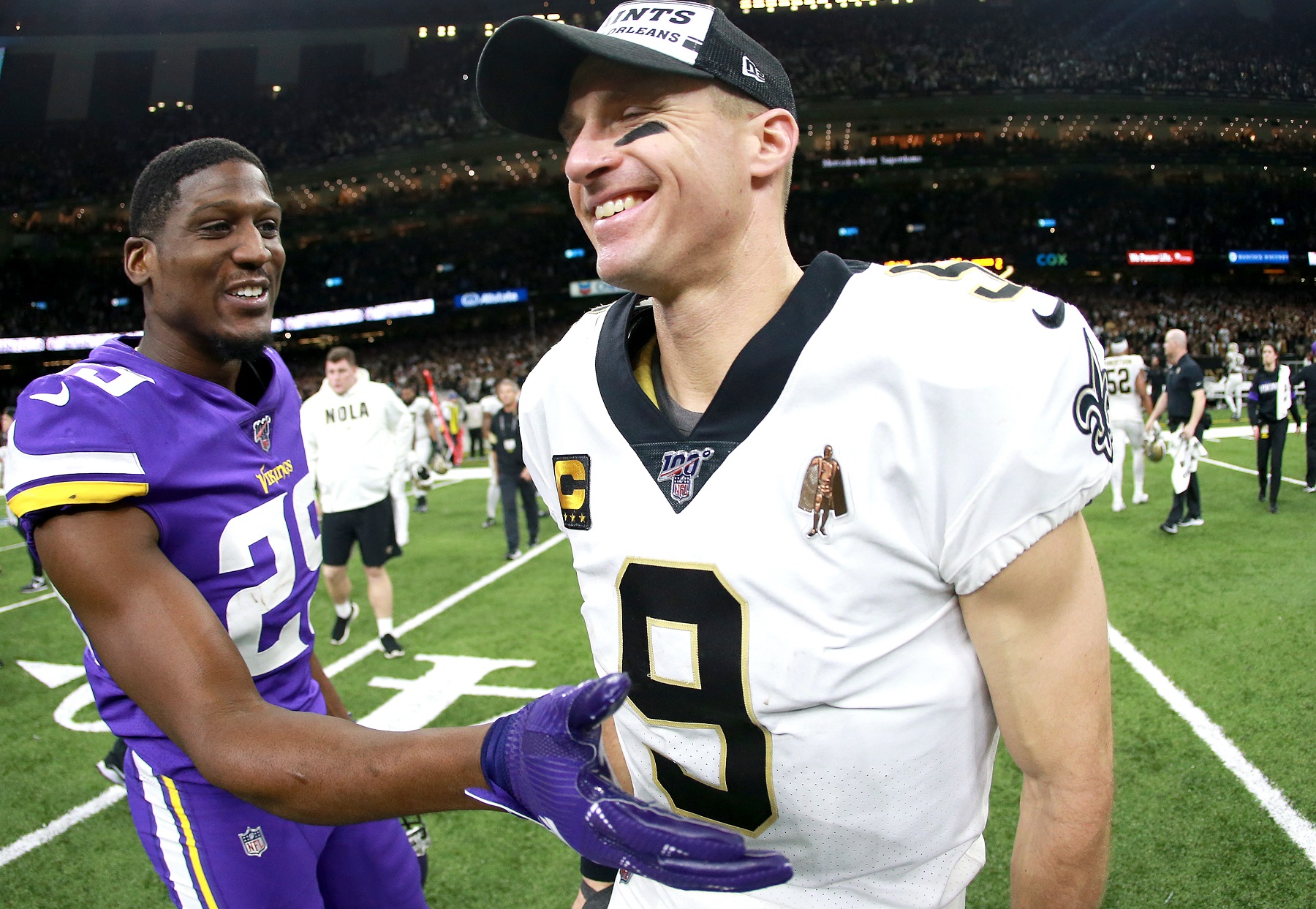NFL
Credit Drew Brees for Helping Tampa Bay Solve a Big Problem

Every NFL offseason brings intrigue in the form of quarterbacks changing teams. The months between the Kansas City Chiefs winning Super Bowl 54 and then kicking off the 2020 season with a win didn’t disappoint. But one QB who didn’t move, New Orleans Saints veteran Drew Brees, unwittingly generated the most suspense of all.
Philip Rivers led the list of interesting early moves
RELATED: Drew Brees Is Transforming His Game Like Never Before
Philip Rivers and the Los Angeles Chargers arrived at a mutual decision in February that made him a free agent after 224 consecutive starts at quarterback and 397 touchdown passes. Despite Jacoby Brissett coming off a credible year, the Indianapolis Colts signed Rivers as a free agent.
The Carolina Panthers also decided to move on from a veteran, choosing to let Cam Newton go and instead signing Teddy Bridgewater, who was backing up Drew Brees with the Saints. Newton, of course, eventually landed with the New England Patriots near the end of July as the Patriots became the last NFL team to lock in a quarterback.
New Orleans subsequently picked up Jameis Winston, who was let go by the Tampa Bay Buccaneers. After a 30-interception season by Winston, Tampa Bay needed consistency from a quarterback who would be inheriting a solid corps of receivers.
The man that Newton replaced was the big story of the offseason. We now have an explanation of why the drama around Tom Brady’s future dragged out for as long as it did: Tom Brady’s preferred landing spot never opened up.
Tom Brady was waiting for Drew Brees to make a decision
RELATED: Drew Brees Is Forcing Himself to Make a Significant Change
One day before his contract expired in mid-March, Tom Brady announced that he would not re-sign for a 21st season with the New England Patriots and would instead become a free agent.
It ended a lengthy, nerve-racking wait for Patriots fans, who’d endured speculation since the regular season about the future of the quarterback who’d led the team to six Super Bowl victories.
According to multiple reports emerging on the first Sunday of the new season, Brady waited as long as he did in part because of Drew Brees. Although the Los Angeles Chargers and Tampa Bay Buccaneers were aggressive in their pursuit, Brady and the New Orleans Saints were interested in doing a deal in the event that Brees decided to retire.
Ian Rapoport of NFL Network reported Brady was open about his interest in New Orleans, even talking to Saints players, knowing that word would get back to coach Sean Payton. However, whatever chance Brady had of going to New Orleans ceased on Feb. 18 when Brees ended speculation that he would move into the TV booth by announcing he was returning to the Saints.
The season kicks off with Drew Brees with Tom Brady
RELATED: Tom Brady’s First Snap With the Buccaneers Will Shatter Brett Favre’s Record
Once Drew Brees decided to stay with the New Orleans Saints, Tom Brady’s next month consisted of evaluating options other than the New England Patriots. According to reporter Ian Rapoport, the Chicago Bears made more of a run at Brady than most observers realized.
Ultimately, however, Brady’s decision came down to his preference for warm weather. That meant choosing between the Los Angeles Chargers and Tampa Bay Buccaneers. He officially left the Patriots on March 17. Three days later, the most successful quarterback in NFL history was a Buccaneer on a two-year contract worth as much as $59 million.
The result is an intriguing Week 1 matchup: Tom Brady’s Buccaneers vs. Drew Brees’ Saints in the oldest regular-season matchup between quarterbacks. Brees is No. 1 all-time in NFL passing yards (77,461) and touchdowns (547). Brady is second in passing yards (74,571) and touchdowns (541).
All stats courtesy of Pro Football Reference.











